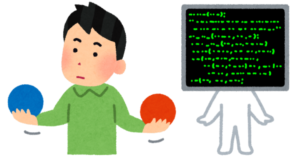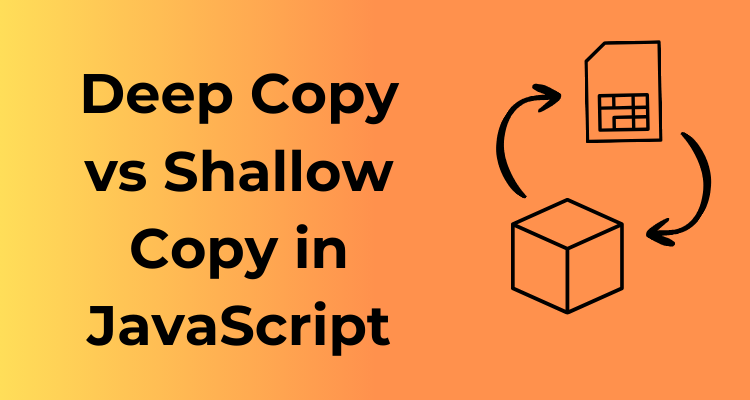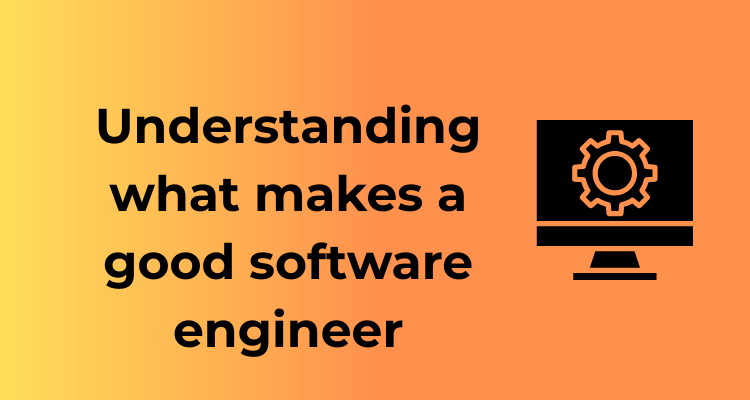Ah, copying data in JavaScript—it might sound simple, but beneath the surface lies a world of nuances! If you’ve ever worked with objects, arrays, or even primitives like numbers and strings, you’ve probably come across the concept of “copying,” either knowingly or accidentally. So, let’s roll up our sleeves and break this down step by step—what does copying mean in the context of JavaScript?
Copying Primitives vs. Reference Types
First, let’s start with the fundamentals. When you want to “copy” something in JavaScript, the behavior can vary depending on whether you’re working with primitive types or reference types. Sounds fancy, right? But don’t worry—it’s not nearly as scary as it sounds!
- Primitive Types: These are your bread-and-butter data types such as
number,string,boolean,null,undefined, andSymbol. When you copy a primitive, you get an independent value that has no connection to the original. Think of it like photocopying a sheet of paper—it’s a separate copy! - Reference Types: Now, this is where it gets interesting. Reference types include
object,array, andfunction. When you copy a reference type, you’re typically not copying the actual value itself but rather a reference (or pointer) to it. It’s like giving someone a map to the same treasure chest instead of creating a new treasure chest altogether.
Why Understanding Copying Matters
At this point, you might be wondering, “Does this really matter in my everyday coding life?” Oh, it absolutely does! Misunderstanding copying mechanisms in JavaScript can lead to all sorts of unexpected headaches—bugs, surprising behavior, and even major performance issues. Trust us, it’s worth the five minutes it takes to master this concept.
Understanding how copying works can help you:
- Avoid accidental changes when working with objects or arrays in your code.
- Make more strategic decisions about how to organize and manage your data.
- Write cleaner, more maintainable, and more bug-free code.
Here’s the twist: because copiedTask references the same object as task, changing the completed property on one will affect the other! That wasn’t the photocopy experience you were expecting, huh?
The Bigger Picture
In short, “copying” in JavaScript means something different depending on whether you’re dealing with primitives or reference types. With primitives, copying creates a completely independent new value. With reference types, however, what you often get is just a reference to the same underlying data.
This is just the tip of the iceberg, but understanding this foundation will prepare you for deeper dives into things like shallow copies and deep copies (spoiler alert: that’s coming soon in other parts of this guide!). For now, keep in mind this golden rule: when in doubt, pay close attention to whether you’re handling a primitive or a reference type—it’ll save you a world of confusion later.
The Mechanics Behind Shallow Copy: What Happens Under the Hood?
Let’s dive into the fascinating world of shallow copies! When people first encounter this term, it might sound technical and intimidating, but don’t worry. We’re going to break it down step by step, so you not only understand but feel confident about how it works in JavaScript.
First things first: when we talk about a “shallow copy,” we’re referring to copying the values of a variable from one place to another without delving into deeper structures like nested objects. Imagine you have a box filled with other boxes (nested objects). A shallow copy is like copying just the outer box, leaving the inner boxes untouched. This can be both helpful and problematic depending on your use case.
What Exactly Happens in a Shallow Copy?
When you create a shallow copy of an object or array in JavaScript, the top-level items (like primitive values or direct references to objects) are copied. However, if the object contains nested objects or arrays, only the references to those nested structures are copied, not the actual data.
This means that even though you have two objects that look separate, they are still interconnected through shared nested structures. Changing one nested object reflects those changes everywhere the reference exists. This crucial concept helps us understand why shallow copies can sometimes lead to unintended issues.
How to Create a Shallow Copy
Luckily, JavaScript offers a variety of methods to create shallow copies. Here are some of the most common ones:
- Object.assign(): This is a classic way to create a shallow copy of an object by merging the properties of an object into a new, empty object.
- Spread Operator (…): With arrays and objects, the spread operator provides a concise and modern syntax for creating shallow copies.
- Array.prototype.slice(): For arrays, the
slice()method can be used to copy the elements into a new array.
Examples:
Here’s how some of these methods work in practice:
// Using Object.assign() for a shallow copy of an object
const original = { a: 1, b: { c: 2 } };
const copy = Object.assign({}, original);
copy.b.c = 42;
console.log(original.b.c); // Output: 42 (affects the original because nested "b" is shared)
// Using the Spread Operator for arrays
const arrayOriginal = [1, 2, { nested: 3 }];
const arrayCopy = [...arrayOriginal];
arrayCopy[2].nested = 99;
console.log(arrayOriginal[2].nested); // Output: 99 (nested object is still shared)
Pros and Cons of Shallow Copy
Now you may be wondering, “Why even use shallow copies if they share references?” Well, they have their place in programming, and here’s why:
- Pros:
- Fast and efficient for simple structures
- Ideal when deep copying is unnecessary (e.g., if no nested objects are modified)
- Cons:
- Doesn’t fully isolate data; changes to nested objects affect all copies tied to the reference
- Can lead to tricky bugs when dealing with complex or deeply nested structures
When Should You Use Shallow Copy?
Go for a shallow copy when you know your data is mostly flat, meaning it doesn’t contain nested objects or arrays that you intend to modify independently. For quick data duplication or basic non-mutational tasks, shallow copying is your best friend!
But—and this is a big “but”—if your data includes complex, deeply nested structures where you need full independence, you’re entering deep copy territory. We’ll leave that for a later discussion, but hold onto that thought!
For now, give these shallow copy methods a try in your own projects. They’re lightning-fast tools that, when used correctly, can be a coder’s dream.
Diving Into Deep Copy: How Does It Differ and Why Does It Matter?
Alright, so you’ve heard of shallow copy and now we’re diving into deep copy. Buckle up because this is where things get really exciting in the world of JavaScript! While a shallow copy just scratches the surface—literally—deep copies dive in headfirst, making perfect clones of data down to the smallest level.
What Exactly is a Deep Copy?
A deep copy, unlike its shallow counterpart, creates an entirely new object or array that is independent of the original. This means that if your original object gets modified, the deep copy remains unaffected. Sounds neat, right? The magic of deep copying lies in its ability to handle nested objects, arrays, or even objects within arrays. Essentially, it ensures that every level of nested structure is copied instead of just copying references.
Let’s take a friendly analogy to make this clearer: Imagine you’ve got a beautiful handwritten letter, and instead of taking a photocopy (shallow copy), you rewrite every single word of it on a fresh sheet, complete with the doodles in the margins. That rewritten version? That’s a deep copy—your meticulous recreation.
Why Does a Deep Copy Matter?
Here’s where deep copying shines. In JavaScript, objects and arrays are often reused across the app. If you’re not careful with how you copy them, you might accidentally create side effects. Changing data in one place (thinking it’s isolated) could ripple through your program and lead to bugs—and trust me, debugging something like that won’t be your idea of fun.
A deep copy lets you confidently create independent versions of your data, so changes to one don’t sneakily mess up the other. This is especially important when working with complex, nested objects or when multiple parts of your application are working with the same data structure.
So How Does Deep Copy Really Differ from Shallow Copy?
Here’s a quick and accessible comparison for you:
- Shallow Copy: Copies only the first layer of an object or array. Inner objects or deeper levels remain as references to the original, which means they’re still linked.
- Deep Copy: Recursively copies all levels of nested objects/arrays, creating a completely independent structure.
Key Takeaway: If your data structure has multiple layers and you want to ensure full independence, a deep copy is your best friend.
How Can a Deep Copy Be Achieved?
The “how” is vital—and don’t worry, I won’t dive deep into techniques here (that’s saved for another heading). However, to give you a teaser:
- You can manually build a deep copy using recursion for smaller structures.
- Leverage built-in methods like
JSON.parse(JSON.stringify(obj))for simplicity with some caveats. - Use modern libraries like Lodash (hello,
_.cloneDeep!) for reliable solutions.
When Do I Use Deep Copy?
If your object has highly nested layers or multiple developers are accessing and mutating the same dataset, you’ll absolutely benefit from using deep copies. It’s all about minimizing unforeseen bugs and maintaining clean, predictable data flow.
Common Scenarios When Shallow Copy Won’t Cut It
Let’s dive into a very real-world problem: situations where a shallow copy in JavaScript just doesn’t quite make the cut. Have you ever found yourself scratching your head over mysterious changes to your data structure, or wondering why your app isn’t behaving as expected? If so, this might be why!
Understanding the Limits of Shallow Copies
Shallow copies can seem handy and quick, but they come with a caveat: they only copy the top layer of the object or array. If your data structure contains nested objects or arrays, a shallow copy simply references those inner layers instead of duplicating them.
Here’s the kicker—this means that changes made to nested objects in the copied structure will also affect the original! Yikes, right? Let’s discuss real-life examples where this can trip you up.
Scenario 1: Working with Nested Objects
Say you’re developing a todo list app that stores complex objects for each task. Here’s an example:
const originalTask = {
title: "Learn JavaScript",
details: {
completed: false,
dueDate: "2023-10-30"
}
};
const shallowCopy = { ...originalTask };
shallowCopy.details.completed = true;
console.log(originalTask.details.completed); // Output? True. 😱
Uh-oh! You only meant to update the shallowCopy, but because details is a nested object, it’s still shared between the original and the copy. This is where shallow copying falls short.
Scenario 2: Maintaining Immutability in State Management
If you’re using a library like React or Redux, immutability is the golden rule for managing state. Shallow copying can mess things up when your state contains deeply nested objects, as any changes to the nested properties could inadvertently affect your app’s current state.
For example:
const state = {
user: {
name: "Alice",
preferences: {
theme: "dark"
}
}
};
const newState = { ...state };
newState.user.preferences.theme = "light";
console.log(state.user.preferences.theme); // Boom! "light". The original state was mutated.
This can cause unpredictable bugs and unexpected UI updates. Deep copying would be a lifesaver in such cases.
Scenario 3: Cloning Complex Data Structures
Imagine your application handles complex data structures like multi-level configurations or nested datasets. A shallow copy just skims the surface of the object or array, leaving the underlying structure linked to shared references. This can lead to unintended data corruption when different parts of your app manipulate this data independently.
When Should You Avoid Shallow Copying?
Here’s a quick rule of thumb: if your data structure is simple and doesn’t have nested elements, a shallow copy might be just fine. However, if you’re dealing with:
- Nested objects or arrays
- State management that requires immutability
- Complex or deeply structured data
It’s safest to turn to a deep copy method instead.
Deep Copy Techniques: Tools and Methods for Practical Implementation

Alright, so you’ve wrapped your head around what deep copying is and why it’s important. Now the question is, how do you implement it? No worries, I’ve got you covered. Let’s dive into the tools and methods you can rely on to create deep copies effortlessly. Whether you’re new to this or just looking to level up your JavaScript game, here’s a breakdown that will help you master the art of deep copying.
1. The Old-School JSON Approach
The JSON.stringify() and JSON.parse() combo is like the classic peanut butter and jelly—simple, reliable, and effective. Here’s how it works:
const original = { name: "Alice", details: { age: 25, city: "Wonderland" } };
const deepCopy = JSON.parse(JSON.stringify(original));
This method converts the object into a JSON string using JSON.stringify(), then back into an object using JSON.parse(). Voilà! You’ve got a deep copy. However, keep in mind:
- Pro: It’s simple to use and built right into JavaScript—no external libraries needed!
- Con: It has limitations. For instance, it won’t work well with functions,
undefined,NaN, or special objects likeMapandSet.
2. Utilize a Utility Library: Lodash
If you’re looking for flexibility and reliability, Lodash is a powerhouse. It provides a dedicated method called _.cloneDeep() that takes care of deep copying for you.
const _ = require('lodash'); // Make sure Lodash is installed
const original = { name: "Alice", details: { age: 25, city: "Wonderland" } };
const deepCopy = _.cloneDeep(original);
It handles edge cases that JSON.stringify() might fumble, such as functions and complex data types. Lodash is super handy and worth considering, especially for larger projects.
3. The Recursive Manual Copy
Feeling adventurous? You can manually implement a deep copy function using recursion. This gives you complete control, but it requires a bit of coding effort:
function deepCopy(obj) {
if (!obj || typeof obj !== "object") {
return obj;
}
const copy = Array.isArray(obj) ? [] : {};
for (const key in obj) {
if (obj.hasOwnProperty(key)) {
copy[key] = deepCopy(obj[key]);
}
}
return copy;
}
const original = { name: "Alice", details: { age: 25, city: "Wonderland" } };
const deepCopy = deepCopy(original);
This method is super flexible, but it does require more effort and knowledge about JavaScript structures. If you love fine-tuning your code, this approach is for you!
4. Structured Clone API
Did you know there’s an official modern method now? Say hello to the structuredClone() API. It’s a built-in feature that works almost like magic. Simple and elegant:
const original = { name: "Alice", details: { age: 25, city: "Wonderland" } };
const deepCopy = structuredClone(original);
The best part? It supports a wide range of data types, including Map, Set, and more. It’s fast, native, and future-proof.
Which Technique Should You Use? 🤔
Choosing the right method depends on your specific needs:
- For simple data structures: The JSON method is quick and easy.
- For complex objects: Use Lodash or
structuredClone()for greater reliability. - If you like control: Go ahead and try the manual recursive approach.
Deep copying doesn’t have to be daunting. Experiment with these techniques, and you’ll find the one that best suits your project. Whether using modern APIs or trusty libraries, there’s always a way to craft solid and dependable deep copies. Happy coding!
Performance Implications: When to Use Shallow vs Deep Copy
So, you’ve decided your JavaScript object needs a copy. Great! But hold up—should you go for a shallow copy or a deep copy? Choosing the right option can save you time, memory usage, and a lot of debugging headaches. Let’s break it down in a casual and easy-to-follow way, shall we?
Why Does Performance Even Matter Here?
Simply put, copying isn’t free. Each time you copy data, your program has to spend some resources on it. The more data you’re dealing with—or the more complex it is—the higher the cost in terms of time and system performance. So, making the right choice between shallow and deep copying really matters when you’re scaling an application or processing large amounts of data.
Shallow Copy: The Fastest Kid on the Block
A shallow copy is quick—lightning quick—and here’s why. Instead of making a brand-new copy of every single piece of nested data, it just references the same inner objects in memory. That’s a fancy way of saying, “We’ll keep things as-is and copy only the outermost shell.”
This performance advantage makes shallow copying perfect for:
- Small data sets: If your objects are small and not deeply nested, you’re golden.
- Temporary operations: Maybe you’re toggling through data for a quick UI update. No point in creating a deep copy for that.
- Non-destructive code: If your code won’t modify the original or copied objects later, a shallow copy does the job just fine.
Deep Copy: Thorough but Resource-Intense
Now, let’s talk about deep copy. It’s the heavy lifter—creating a completely independent clone of every single object, no matter how deeply nested. The tradeoff? It takes more time and resources to accomplish. For simple objects, this may feel like overkill, but for complex or sensitive operations, it’s a lifesaver.
Consider using deep copying for:
- Complex or nested structures: If you’re working with arrays or objects nested multiple levels deep, deep copying ensures every level is cloned separately.
- Critical data integrity: When you can’t risk the original object being accidentally modified.
- Long-term data storage: If you need a snapshot of your application’s state, a deep copy ensures a pristine and isolated copy of the data.
Now, Here’s the Gentle Balance
The trick lies in assessing your specific use case. Some questions to ask yourself are:
- How large or nested is your data?
- Do minor changes to the original object affect the copied object in unexpected ways?
- Is execution speed critical for this process?
Usually, shallow copying works for simple tasks, but as the complexity of your operations grows, so too does the need for a robust deep copy.
Quick Pro Tip!
Run performance benchmarks on your implementation. Use tools like console.time() to measure how long each type of copy takes for your specific data set. This way, you can back your decision with data—not just guesswork!
Comparing Shallow and Deep Copy with Code Snippets and Examples

Let’s take an exciting dive into the world of shallow and deep copying by looking at examples in action. I promise it’s not as intimidating as it sounds. By the end of this section, you’ll feel more confident about choosing the right copy technique for your JavaScript needs. Ready? Let’s roll!
Where Theory Meets Practice
First off, let’s understand how shallow copy behaves compared to a deep copy. To make it fun, we’ll use some code snippets to make things crystal clear.
Example 1: Shallow Copy in Action
Here’s a simple example using the shallow copy method with Object.assign():
// Original object
const original = {
name: "Alice",
details: {
age: 25,
job: "Developer"
}
};
// Shallow copy using Object.assign
const shallowCopy = Object.assign({}, original);
// Modifying the nested object in the original
original.details.age = 30;
console.log(shallowCopy.details.age); // Output: 30
What happened here? Although we created a shallow copy, the details property inside the object remained referenced to the same memory location. As a result, any changes to the nested object in the original were reflected in the shallowCopy. Effectively, it’s not as “safe” as you might think when dealing with nested elements.
Example 2: Deep Copy to the Rescue
Now, let’s try a good old-fashioned deep copy using JSON.parse(JSON.stringify()):
// Original object
const original = {
name: "Alice",
details: {
age: 25,
job: "Developer"
}
};
// Deep copy using JSON
const deepCopy = JSON.parse(JSON.stringify(original));
// Modifying the nested object in the original
original.details.age = 30;
console.log(deepCopy.details.age); // Output: 25
See what happened? The nested details object in original and deepCopy are completely isolated from one another. Thanks to this deep copy technique, changes to the original object don’t ripple into the copy. Hooray for independence!
When to Use Each?
- Stick to shallow copy if you’re working with simple objects without nesting. It’s fast and gets the job done.
- Opt for deep copy when dealing with complex or deeply nested objects, especially when you want to ensure no accidental spillovers happen between the original and the copy.
Gotchas to Keep in Mind
- Deep copies can be slow for very large, deeply nested objects. Use them judiciously.
JSON.parse(JSON.stringify()ignores certain data types like functions andundefined. You might lose specific aspects of your object with this method.- Libraries like Lodash provide robust deep copy utilities that can handle edge cases better.









